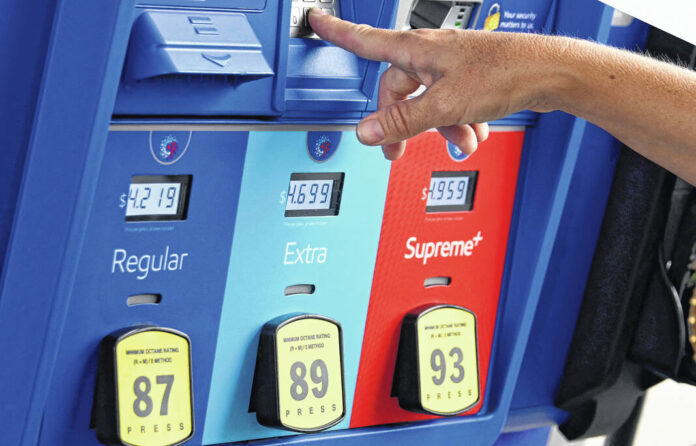No household staple has been spared the creep of inflation — not milk and definitely not gasoline, both conveniently sold by the gallon and essential to many family routines.
There aren’t a lot of screaming headlines about milk prices.
Yes, the comparison is clumsy. Yet it illustrates the volatility of some common purchases against the stability of others.
Gas is notoriously volatile. That means its spikes tend to be followed by steeper declines, whereas the slow-moving shifts in the price of other consumer products like milk aren’t as likely to fall into a headline-grabbing spiral.
For the past 12 weeks, the U.S. has experienced such a slide, bringing gasoline prices back to levels last seen before Russia invaded Ukraine in February.
Both commodities had been selling for below $4 a gallon in the early months of this year. And both surpassed that threshold in the spring.
A gallon of regular unleaded gasoline shot up to an average of $4.32 in mid-March. Three months later, it hit $5.
Milk crept to $4.10 a gallon in April, according to the U.S. Bureau of Labor Statistics, and the price hasn’t moved very much since.
Gasoline is now back below $4 in many parts of the country. According to GasBuddy.com, a website that tracks gas prices across the U.S., the national average was $3.73 per gallon.
If falling below $4 is a psychological milestone, so are some of the factors that drove the decline.
Fears of a recession, of slowed industrial production and demand in China where new COVID-19 outbreaks continue to prompt citywide shutdowns, and a weak hurricane season (so far), all were factors in gas prices slipping over the past few months, analysts said.
The price of crude oil, which is processed into gasoline, dropped again on Wednesday, even as OPEC decided to cut production by a small amount earlier in the week. The West Texas Intermediate benchmark traded at around $82 per barrel, a far cry from the $120 seen in June.
Because the supply chain that exists between crude oil and gasoline is so much shorter than that involved in producing a gallon of milk, it also takes far less time for a drop in crude oil to show up in consumer gas prices.
“Slip sliding away,” was the headline of AAA’s weekly gas price report on Monday.
AAA and other gas price analysts noted there also has been a drop in U.S. demand for gasoline — during the week ended Aug. 26, the latest for which Energy Information Administration data is available, it was 10% lower than during the same time last year.
(Milk use, by contrast, dropped by about 1.5% during the second quarter of this year compared with the same period in 2021, according to data from the U.S. Department of Agriculture.)
“For now, (gas) price movements will be contingent on where you are,” Patrick DeHaan, head of petroleum analysis at GasBuddy, wrote on Monday.
He said there might be some gas price increases in California and in the Great Lakes region, where a refinery outage impacted supplies. In other parts of the U.S., like the Gulf Coast, gas prices may keep dropping, he said.
On Wednesday, large swaths of Texas were in the $3-a-gallon territory.
California, meanwhile, was averaging around $5.20, according to GasBuddy.
Next week should bring more relief, Mr. DeHaan noted, as gas stations switch from costlier, less polluting blends during the summer months to cheaper winter gasoline.
By Wednesday afternoon, Mr. DeHaan was tweeting predictions of $2.99 gas, “possibly by the end of the year.”







